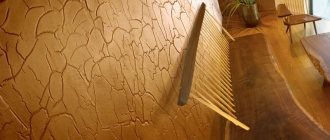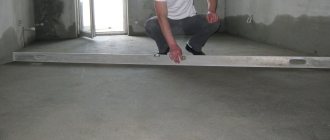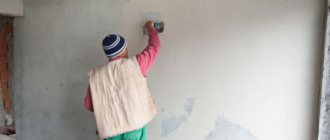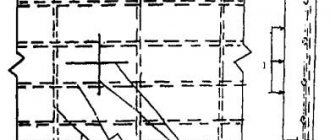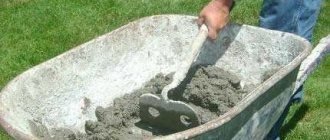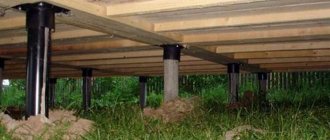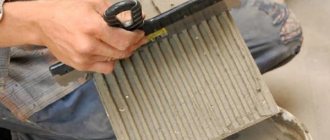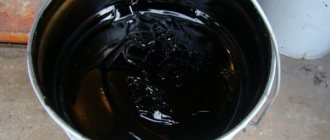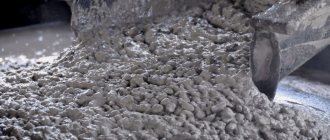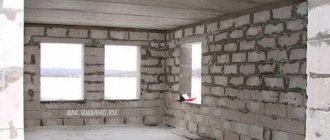Carrying out finishing work in an apartment often includes leveling the walls using plastering. In order to determine in advance the amount of material to be purchased, you need to know the consumption of plaster required for this operation. Such awareness will help not only to avoid downtime caused by a lack of dry mixture, but also to avoid unnecessary costs. Hired workers, wanting to earn extra money, often overestimate the amount of dry mixture consumed, and such a calculation will bring them to clean water.
Important! To calculate the consumption of plaster that will be required to obtain a flat surface, it is not enough to simply multiply the consumption of the dry mixture per 1 m2 indicated on the bag with the plaster mixture by the area of the wall being treated. In the calculation, parameters such as the curvature of the walls and the type of material used for plastering should be taken into account.
Determining layer thickness
To make a preliminary calculation and find out how much material is required per square meter of coating, you need to determine the thickness of the plaster to be applied. To do this, the first thing you need to do is clean the wall surface as thoroughly as possible.
Smooth walls in apartments, especially those built during the Soviet period, are quite rare. To find out the deviation of the wall, you should level several beacons on it. The layer thickness is calculated as follows:
- The deviation from the plane is measured for each beacon.
- All results are summed up and divided by the number of measurements. The resulting value will be the average layer thickness, on which the consumption of plaster required to level the available square meters of wall will depend.
For example, you need to plaster a wall with an area of 12 m2 with a maximum deviation of 6 cm. Four beacons were installed that showed deviations of 1.2, 4 and 5 cm. The average layer thickness in this case is found as the arithmetic mean:
(1+2+4+5)/4=3 cm.
In old apartments, there are often cases when the walls are filled unevenly, and installing beacons will be quite difficult. But otherwise it is not possible to calculate how much material is required for each square meter of surface.
In new buildings, walls rarely deviate from the vertical plane by more than 20–25 mm. In these cases, a thin leveling layer will be required, therefore, the consumption of plaster per 1 m2 will be small.
Note! In any case, the thickness of the layer cannot be less than the thickness of the beacon. The standard beacon profile has a thickness of 6 mm, and this should be taken into account when calculating the required amount of plaster mixture.
Cement compositions
The plaster consumption per 1 m2 in this case will be about 16-18 kg. These figures are valid for both ready-made store-bought products and those made independently. The composition of such plasters usually includes cement and sand. Their volumetric ratio is 1:3. Therefore, about 4.5 kg of cement per m2 will be needed. For plasters, it is better to take high-grade material, for example, M400. Sand per 1 m2 will need 13.5 kg. Before kneading, it must be sifted.
Sometimes plasters are made based on cement with the addition of a lime mixture. Usually they are bought ready-made. To obtain a smooth surface, cement-lime plaster is most often applied in two layers: preliminary spraying and coating. Therefore, its consumption is significant.
Dependence of mixture consumption on the type of plaster
Having determined the average size of the leveling layer, you can calculate the required amount of material depending on the type of plaster mixture used. The packaging must indicate how much material is required to form a leveling layer of 1 cm on a surface of 1 m2. This value should be multiplied by the average thickness of the plaster obtained earlier and by the number of square meters of surface to be leveled.
USEFUL INFORMATION: Basic rules for plastering walls
Decorative plasters
To finish a surface of 1 m2 with this type of material, you will need an average of about 8 kg. But in this case it all depends on the specific type of decorative mixture. Very popular at the moment is, for example, the bark beetle product, intended mainly for finishing facades. The plaster (consumption is somewhat less) of this brand is of very high quality. To finish 1 m2 of surface you will need about 2.5-3 kg of bark beetle with a layer thickness of 1 mm.
Characteristics of various types of plasters and approximate consumption rates
Each type of plaster mixture has its own characteristics, and the material consumption per 1 m2 of surface can vary significantly.
- Gypsum is durable, dries quickly, very easy to use, but in most cases it is not suitable for wet rooms. Approximate consumption – 9 kg per square meter with a thickness of 1 cm.
- Cement is universal, moisture resistant, can be applied to concrete, brick and even old plaster. Suitable for any room, including the bathroom, kitchen and open balcony. The highest consumption is 17 kg/m2.
Working with cement mortar is quite difficult, so many owners prefer to trust specialists who offer services for applying plaster mortar by machine.
What can affect the consumption of plaster
No matter how much you would like to save building materials, certain difficulties always arise. This concerns the consumption of the material itself.
Thus, we can identify several specific factors that can influence the significant waste of facade plaster per m2:
- Consumption is determined by curved walls - this is precisely the reason why very often you have to spend a lot of plaster in order to achieve evenness and, in the future, ideal cladding for each m2. For example, even in the newest houses, the deviation from the ideal wall can reach almost 25 mm. In order to check such indicators, you can use a building level. But in any case, you will have to carry out such a procedure in order to preliminary assess the situation.
- Consumption is also determined by the type of façade plaster itself. In this case, the selection is carried out individually, depending on what you want to achieve in the end. For example, facade plaster requires more consumption per 1 m2 directly for external walls, since most of them do not provide a perfectly flat surface.
Knauf Rotband
“Rotband” is a popular, affordable and high-quality gypsum mixture, optimal for application by hand. The thickness of the layer should not exceed 5 cm. The amount required to treat 1 m2 with a layer of 1 cm is 8.5 kg.
Buy Knauf Rotband online
We have agreed on DISCOUNTS for our readers in the LEROY MERLIN store.
Buying online is very profitable, convenient and safe: you can purchase the mixture without leaving home or visiting a store. All purchases will be delivered to your home.
In addition, in the online store, on each product page you can see the exact characteristics and real customer reviews.
Packaged in 30, 10 and 5 kg:
- Gypsum plaster Knauf Rotband, 30 kg >>>
- Gypsum plaster Knauf Rotband, 10 kg >>>
- Gypsum plaster Knauf Rotband, 5 kg >>>
Volma Layer
“Volma” is another plaster widely known in finishing circles, high-quality and inexpensive. A cement-based composition is used for rough leveling; material consumption reaches 12 kg/m2. Volma gypsum plaster mixture is used for treating walls and ceilings for painting or wallpapering and does not require subsequent puttying. Consumption – 8–9 kg/m2.
USEFUL INFORMATION: How to plaster a brick wall
Gypsum plaster “VOLMA-Sloy” is intended for finishing finishing work manually indoors. It perfectly fills potholes and helps smooth out uneven walls, as it can be applied in a layer of 5 to 60 millimeters. After drying, the composition forms an even layer of white color on the surface, which does not require subsequent puttying. This mixture is compatible with a wide range of building materials. You can buy it for application to brick, concrete, aerated concrete, etc.
Advantages:
- Versatility.
- Resistant to cracking.
- Affordable price.
- Easy to apply.
Buy: Gypsum plaster Volma Layer 30 kg >>>
Consumption of plaster mixtures per 1 m2
Knowledge of the consumption of plasters is required when calculating the quantity of the purchased product and mixing portions for cladding a certain area. The initial data are the indicators declared by the manufacturer (ideally confirmed by practice) and the average thickness of the applied layer, obtained by measuring level deviations at at least three points per square area. Factors taken into account also include the material and adhesive properties of the base, fire safety functions, type of work (the maximum volume is spent during rough leveling), the need to create a textured pattern or combine several functions (for example, preparation for finishing and thermal insulation).
Approximate consumption of various plaster mixtures
This indicator depends on the size of the inert filler fractions and the type of binder used. The manufacturer indicates it for components in dry, unmixed form, along with the required volume of water.
| Compound | Thickness of the applied layer, mm | Consumption per 1m2, kg |
| Gypsum plaster for roughing and leveling work (Knauf Rotband, Volma) | 10 | From 9 |
| Lightweight gypsum based | 12-15 | |
| Cement-containing | 16-18 | |
| Decorative | 3-5 | 8-8,5 |
| Finishing facades (Bark beetle, Fur coat) | 1 | 3 |
| Venetian | 0,5-1 | 0,07-0,2 |
For rough leveling, gypsum, cement-sand and cement-lime mortars are most often used. PC mixtures have an average fraction size and an almost universal scope of application. But they are also the densest and heaviest, the minimum consumption of cement-sand plaster with a layer thickness and manual application is 16 kg, by machine - 14. Combined compositions with lime additives are considered more economical, but not by much - per 1 m2 under the same conditions it takes about 15 kg.
Gypsum mixtures are valued for their low density, plasticity and low consumption; they are optimal when it is necessary to prepare internal surfaces before finishing. Suitable for both thin-layer laying and for leveling bases with level deviations within 50 mm. The consumption of gypsum plaster depends on the type and size of the filler and varies from 7 kg/m2 for machine-made varieties to 12-15 kg for thermal insulation. The most profitable brands include Knauf, Rotband, average values (9-12 kg/m2 with a layer thickness of 10 mm) are noted for Volna, Starateli and Teplon.
Decorative options are more economical due to thin-layer application and careful preparation of the surface. Finishing compositions with thermal insulation properties (with perlite or expanded polystyrene granules) have average values in the range of 1-1.2 kg/m2 with a layer thickness of 1 mm. Facade cement-containing options such as Bark Beetle or its analogues with heavy mineral chips can hardly be called profitable: with a thickness of 1 mm, the dry consumption reaches 3 kg. The most difficult thing is to determine the required amount of material to create a relief pattern; the specified minimum (1.2 kg/m2) rarely corresponds to reality.
For decorative brands, the curvature of the walls ceases to be a decisive factor. The consumption of the solution in this case depends solely on the thickness and number of layers, which is influenced by the size of the fractions and the experience of the workers. The removed surplus is extremely rarely suitable for reuse (not for everyone and only within the limits of their viability), and purchasing a large supply is difficult for economic reasons. To avoid errors when calculating the required quantity, it is recommended to recreate the pattern on a separate section of the wall or on a surface with the closest possible evenness and hardness.
When calculating Venetian plaster, you should remember its multi-layer application. It takes from 70 to 200 g per square, but in practice such results are achieved only by professionals; in reality, this value is several times greater.
These types require ideal surface preparation; in addition to rough leveling, white or colored finishing compounds are used and thorough sanding is carried out before spreading and grouting.
Recommendations
Calculation of consumption for different purposes (leveling and facing) is carried out separately, even when using homogeneous mixtures. To obtain the most accurate value, measurements of level deviations are carried out at more than 3 points per m2; in order to save money, the installation of the rough layer is carried out along beacons. If there are protrusions or depressions larger than 5 cm, the feasibility of plastering work is checked.
In the case of visually smooth walls or there is no time to take measurements and average calculations, the amount of material is found by multiplying the consumption indicated by the manufacturer for a thickness of 1 centimeter by the area of the structure and by a factor of 2.5 to 3. With high requirements for the evenness of corners and parallelism of all lines indoors, the resulting value is doubled. It is recommended to check the walls for vertical deviations, this is especially true for old-built MKDs (in new panel ones, the default curvature is assumed to be 20-25 mm).
A number of rules are taken into account:
1. Working surfaces are treated with high penetration soils. This requirement is mandatory for walls made of porous bricks or cellular concrete.
2. In order to reduce the volume of plaster and time on large areas, preference is given to the mechanized method.
3. The compositions are diluted with water within the dose specified in the instructions.
4. If high-quality internal leveling is necessary, mixtures that do not require additional putty are purchased, such as Knauf Rotband or Volma; to obtain a smooth coating, simply wipe them with a wet sponge with medium cells. They are also the most economical; the amount of plaster per 1 m2 of surface with a thickness of 10 mm rarely exceeds 10 kg.
5. In the case of several layers, each subsequent one is distributed on top of the one that has released moisture and treated with soil to increase the adhesion of the previous one. Smooth concrete walls are coated with compounds that enhance roughness.
6. Regardless of the type, the plaster is applied to a stable base, free of loose and flaking building materials and dust. Thin and translucent decorative stamps require a uniform color base, most often white.
Gypsum plaster Knauf Iceberg
Knauf Eisberg gypsum plaster is used for leveling walls and ceilings in dry rooms, repair and restoration work. The material is universal and does not require subsequent puttying. The main component of the building mixture is high-quality gypsum, which is an environmentally friendly and lightweight material.
Consumption: 8.5 kg
Gypsum plaster cannot be used in conditions of high humidity, otherwise it is universal and can be used for different substrates:
- concrete of different structures (dense and cellular);
- cement plaster;
- stone and brick;
- expanded polystyrene and DSP.
Advantages of gypsum plaster
The material “breathes”, regulates the amount of moisture in the air, absorbing it when there is excess and releasing it when there is a deficiency. Creates a favorable indoor microclimate.
The mixture is plastic and easy to apply; it is easier to work with than other types of plaster. The coating provides good heat and sound insulation. The consumption of gypsum mixture is significantly lower compared to cement.
Packaged in 30 kg packs: Knauf Iceberg gypsum plaster 30 kg >>>
Types of plasters
There are several factors that influence the consumption of plaster per 1m2. First of all, the amount of dry mixture required depends on its type. For wall decoration the following can be used:
- Gypsum plasters. This type of mixture is used mainly for leveling walls and ceilings from the inside of premises. They cannot be used on the street side or for finishing courtyard structures, since they do not tolerate high air humidity and sudden temperature changes very well. One of the most popular brands of this type is Rotband plaster.
- Cement mixtures. Such materials are used for finishing rooms with high humidity or outdoor structures.
- Decorative plasters. They are usually applied in a thin layer and serve as a finishing touch.
Gypsum plaster Unis Teplon
White gypsum plaster "UNIS Teplon" is suitable for interior decoration of walls and ceilings. After drying, it forms a smooth, glossy surface and does not require the application of putty. The perlite included in the mixture makes it light and increases the heat-shielding characteristics.
USEFUL INFORMATION: Fashionable kitchen: choosing ceramic tiles for the backsplash
Material Features:
- Suitable for sealing seams and cracks up to 7 cm in depth.
- The layer when applied without a mesh on the wall is up to 5 cm.
- The layer when finishing the ceiling is up to 3 centimeters.
- The solution must be used within 50 minutes.
- Consumption when applying a layer of 1 cm is up to 10 kilograms per square meter.
Advantages of gypsum plaster "UNIS Teplon":
- Easy.
- Sets within 3 hours.
- Breathing.
- Does not require application of an additional finishing layer.
- Resistant to cracks.
Packaging 30 kg: Unis Teplon gypsum plaster 30 kg >>>
Final calculation of the required amount of material
Using the data on the packaging, it is easy to calculate the amount of dry mixture that needs to be purchased.
So, for our example with a wall with an area of 12 m2 and a calculated average layer thickness of 3 cm, when using gypsum plaster we get:
3 x 9 x 12 = 324 (kg)
- If the dry mix is supplied in 30 kg bags, you will need to purchase 11 bags.
- For packaging 25 kg - 13 bags.
- For material in 50 kg bags - 7 pieces.
- You will need to buy 33 small 10-kilogram packages.
It is better to buy consumables with a small supply, so that you do not have to make an emergency trip to the store if just a little of the plaster mixture is not enough. And the material from the required manufacturer may simply not be available. It is better to buy an extra bag; the excess can always be used elsewhere.
Thus, having correctly made all the calculations, you can decide on the required budget for repair work, the amount of material purchased and not spend extra money.
